![]()
This page is also available in French
![]()
This Baroque piazza follows the shape of Domitian’s Stadium which once stood on its site – some of the arches are still visible below the church of Sant’Agnese in Agone. The agones were athletic contests held in the 1st-century stadium. The word ‘Navona’ is thought to be a corruption of in agone. Up until the 19th century, the Piazza Navona was flooded during August by stopping the fountain outlets. The rich would splash around in carriages, while street urchins paddled after them.
Berlioz witnessed the carnival in Rome and was not impressed by it: the carnival scene he included in his opera Benvenuto Cellini and located in Rome in the Piazza Colonna was very different in character from the original, which he describes in detail in the Memoirs (chapter 36). He goes on:
Soon after [sc. the carnival], these sensitive and intelligent people move on to Piazza Navona to perform their ablutions, so to speak, and wash off the blood that stains their clothes. On this occasion the square is completely flooded: instead of a vegetable market it is now a real pond of foul and smelly water, on the surface of which float not flowers but pieces of cabbage, lettuce leaves, the skins of water melons, bits of straw and almond shells. On a raised platform, on the side of this enchanted lake, are fifteen musicians, including two bass drums, a drum, a side-drum, a triangle, a Jingling Johnny, and two pairs of cymbals, supported for the occasion by a few horns or clarinets. They perform melodies as pure in style as the water which laps the props of their stage. Meanwhile the carriages of the great and good move slowly around this swamp, to the ironical applause of the sovereign people, whose greatness is not the cause which keeps it riveted to the bank.
![]()
Unless otherwise stated, all the photographs reproduced on this page were taken by Michel Austin in May 2007; other pictures have been scanned from engravings in our collection. © Monir Tayeb and Michel Austin. All rights of reproduction reserved.
The original copy of the following engraving has been donated by us to the Hector Berlioz Museum and they hold the copyright for it.

The imposing church on the left is Sant’Agnese in Agone. The fountain in the middle of the piazza, the Fontana dei Quattro Fiumi, dates back to 1651 and was built by Bernini for Pope Innocent X Pamphilli. The obelisk, like all the others in Rome, was brought from Egypt.
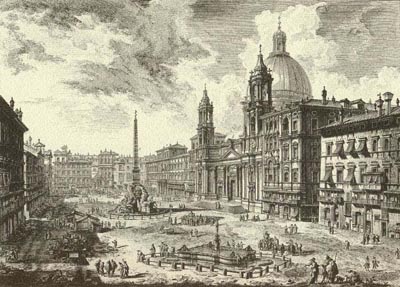

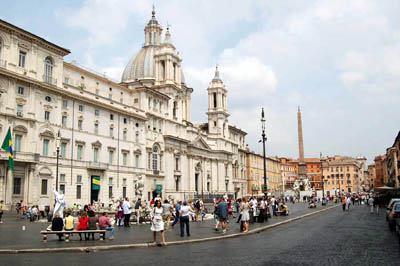
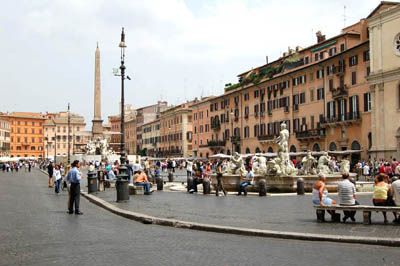

The Fontana del Moro was built by Giacomo della Porta, though Bernini altered it later, adding a statue of a Moor fighting a dolphin.
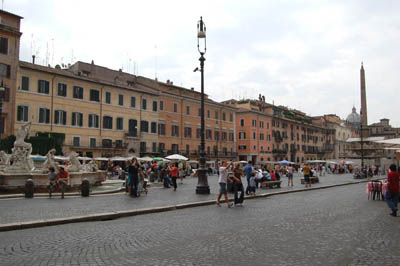

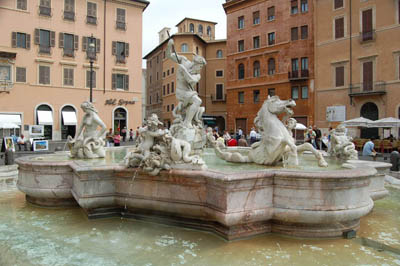
The basin of the Fontana di Nettuno was also built by Giacomo della Porta in 1576, while the statues of Neptune and the Nereids date from the 19th century.
![]()
© Michel Austin and Monir Tayeb for all the pictures and information on this page.
Copyright notice: The texts, photos, images and musical scores on all pages of this site are covered by UK Law and International Law. All rights of publication or reproduction of this material in any form, including Web page use, are reserved. Their use without our explicit permission is illegal.